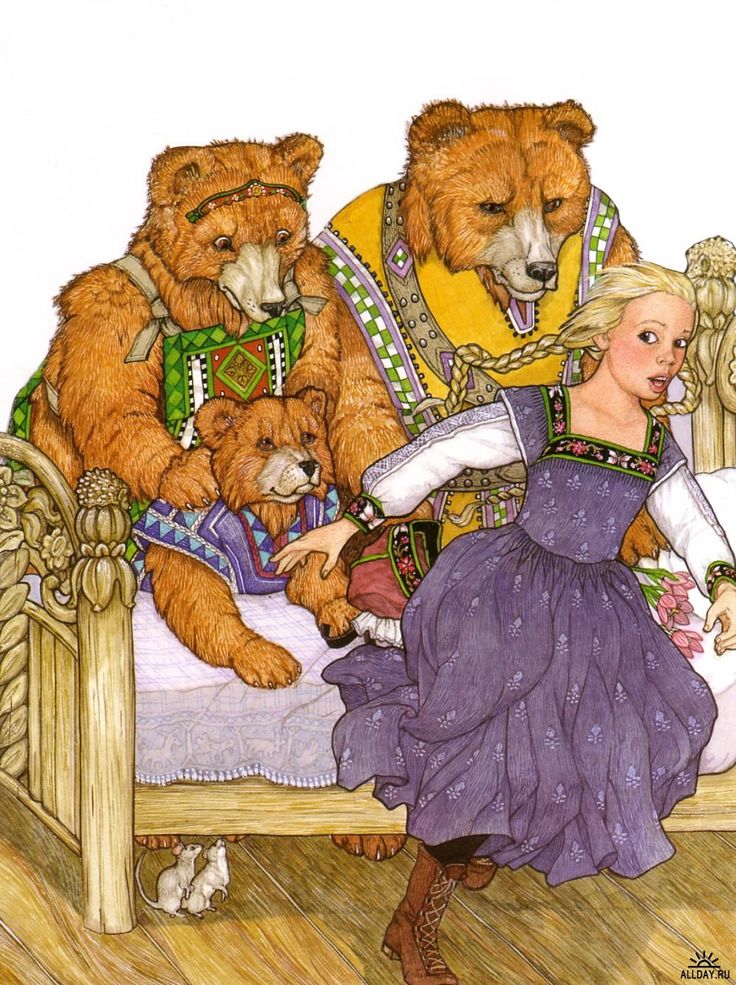This little piggy had roast beef
What Is the Story Behind This Little Piggy?
(Last Updated On: September 13, 2022)
You may remember a nursery rhyme by the name of This Little Piggy from your childhood. Like many similar stories told to young children, this one also incorporated farm animals. This Little Piggy is originally an English nursery rhyme, but has been told in different languages around the world.
The beginning of what we know today as This Little Piggy was originally incorporated in a 1728 melody called “The Nurse’s Song.” However, it was not until 1760 that the full version of This Little Piggy was published in “The Famous Tommy Thumb’s Little Story-Book”. Though the original author of the rhyme is unknown, it is usually attributed to fictional story-teller Mother Goose.
As is the case with any old nursery rhyme, there are bound to be alterations and different versions as time progresses. But this one has interestingly remained pretty much the same throughout its history, with typically only a word or two being changed.
The most common version of This Little Piggy goes like this:
Fingerplay and This Little PiggyThis little piggy went to market,
This little piggy stayed home,
This little piggy had roast beef,
This little piggy had none,
And this little piggy cried “wee, wee, wee” all the way home.
With the progression of time, one of the most popular activities to do when singing this nursery rhyme was incorporating each toe on a baby’s foot into the rhyme. This is a great example of fingerplay (toeplay?). The most common actions associated with each line of the story is as follows.
- This little piggy went to market – Wiggle the child’s big toe.
- This little piggy stayed at home – Wiggle the child’s second toe.
- This little piggy had roast beef – Wiggle the child’s middle toe.
- This little piggy had none – Wiggle the child’s fourth toe.
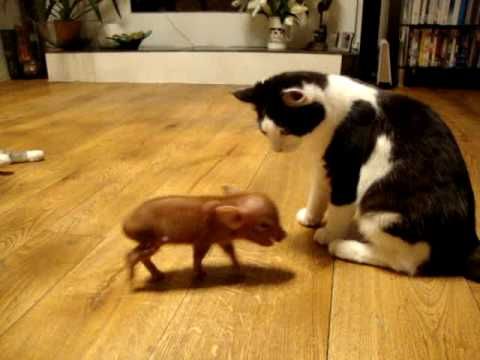
- And this little piggy went “wee, wee, wee” all the way home – This is the part of the rhyme when you tickle the bottom of the child’s foot.
The early years of development for young babies are crucial to their understanding of coordination and dexterity. A very common way of increasing a child’s ability to memorize and form coherent story-telling skills is through the act of fingerplays. This is when actions are added to a rhyme or poem to help a child further learn the words. Fingerplays have been used to teach reading, colors, and counting. The most common example is using the hand to count to ten.
Interested in learning about other nursery rhymes? Check out this quiz.
An Unexpected Interpretation?One of the things parents tend to leave out when telling nursery rhymes to their children is the potentially dark and dreary backstories behind them. In the case of This Little Piggy, it isn’t too hard to spot the darker interpretation.
Think about a “piggy going to the market”. Some have interpreted this to mean that the pig is going to market for slaughter. Working off this then, the “little piggy staying home” refers to a pig not yet ready to eat, and that must stay home to mature. The “little piggy having roast beef” is about fattening a pig up, while the fourth “piggy that gets none” is too small to go to the market. And perhaps most dark, that final little piggy is not singing “wee, wee, wee”, but crying it in fright.
What an incredibly dark scene to play out on a child’s toes!
So, the question remains: is This Little Piggy an innocent rhyme to teach children about their extremities, or an ominous poem about pigs to slaughter? Considering some of the most famous nursery rhymes have a “darker interpretation”, the answer is most likely both.
Curious about where other nursery rhymes came from? Check out these articles.
- What Is the Story Behind Hickory Dickory Dock?
- What Is the Story Behind Hey Diddle Diddle?
Comments
comments
This Little Piggy Analysis - Literary devices and Poetic devices
This Little Piggy
by Mother Goose
This little piggy went to market,
This little piggy stayed home,
This little piggy had roast beef,
This little piggy had none.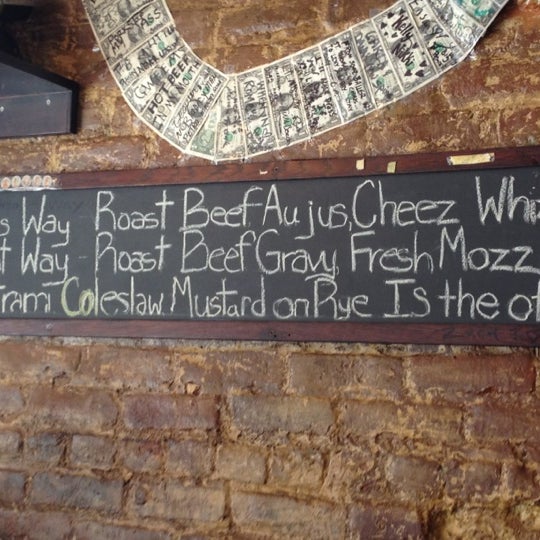
This little piggy went …Wee, wee, wee,
all the way home!
Summary of This Little Piggy
- Popularity of “This Little Piggy”: This nursery rhyme was written by Mother Goose, a famous imaginary author of French fairy tales and many other famous nursery rhymes. It is popular due to its innocent subject matter. It was first published in 1760 in The Famous Tommy Thumb’s Little Story-Book. The poem comprises the story of a pig who passes through several stages before he is brought to the market. This poem is also taught as a fingerplay rhyme. The poem is popular even after so many years of publication and is still read and taught in different pre-school syllabuses across the globe.
- “This Little Piggy” As a Representative of Wonder: This poem is about the life of real farm pigs. Here’s a little piggy is well fed and is taken to the market. The pig thinks that the visit is perhaps to buy food for itself.
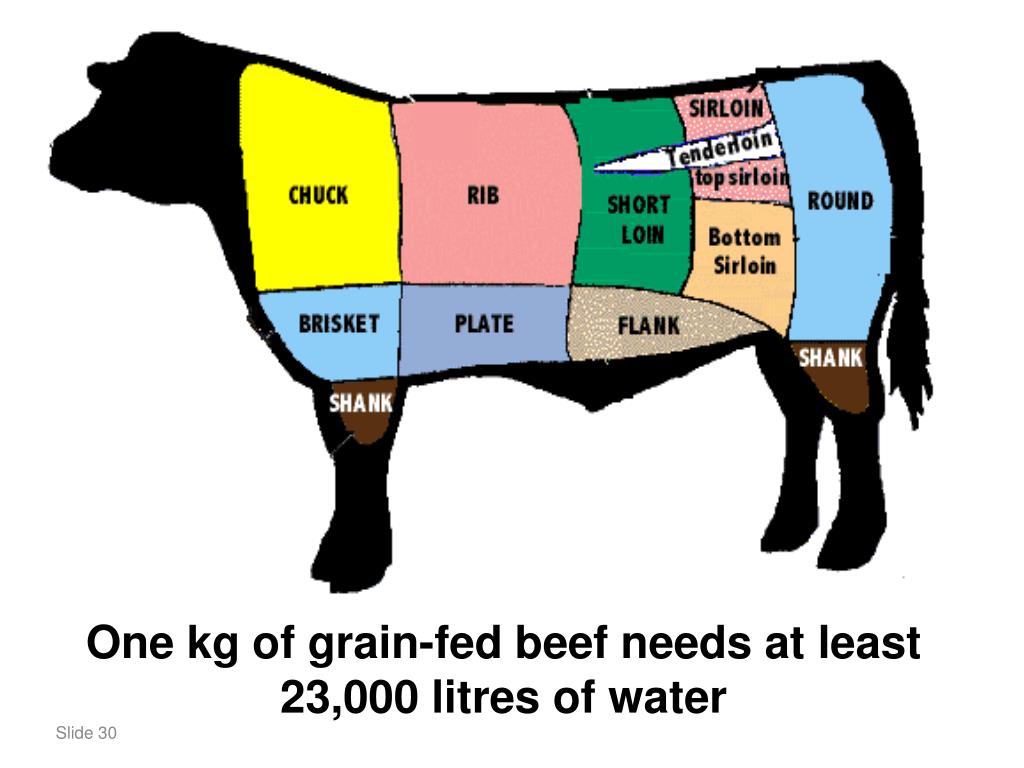 However, it is brought to the market to be slaughtered and sold as food. The expression of wonder starts from the first line and runs throughout the poem. In spite of the poem’s dark origin, there are different interpretations. The reader cannot tell if the little piggy life is either spared from death or it is indeed led to the slaughter, but in its mind, it feels safe.
However, it is brought to the market to be slaughtered and sold as food. The expression of wonder starts from the first line and runs throughout the poem. In spite of the poem’s dark origin, there are different interpretations. The reader cannot tell if the little piggy life is either spared from death or it is indeed led to the slaughter, but in its mind, it feels safe. - Major Themes in “This Little Piggy”: Happiness and fear are the major themes in the poem. The poem deals with the life of pigs. The writer narrates how they are fed, kept at home and then sold in the market. They are kept in proper care. Some are sold and some escape from the looming shadow of death. The cry “wee, wee, wee” is usually heard when the pigs are tied up.
Analysis of Literary Devices Used in “This Little Piggy”
literary devices are tools that enable the writers to enhance their simple texts to bring richness and uniqueness in the texts and open multiple interpretations.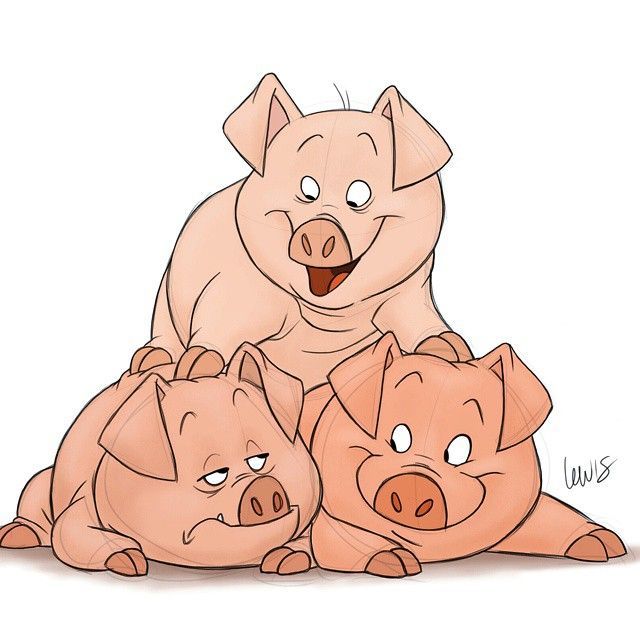 Mother Goose has used a few literary devices in this poem. The analysis of some of the literary devices used in this poem has been given below.
Mother Goose has used a few literary devices in this poem. The analysis of some of the literary devices used in this poem has been given below.
- Imagery: Imagery is used to make the readers perceive things with their five senses. The entire rhyme is imagery to visualize the life of the little piggy and its routine.
- Alliteration: Alliteration is the repetition of consonant sounds in the same line in quick succession such as the sound of /t/ in “This little piggy went to market”.
- Assonance: An assonance is the repetition of vowel sounds in the same line such as the sound of /i/ in “This little piggy had none” and /e/ sound in “This little piggy went to market”.
- Hyperbole: Hyperbole is a figure of speech in which the writer purposefully exaggerates something to an extreme. For example, “This little piggy had none” the piggy was not literally starving, and instead, it represents the condition of the pig before it was taken to the market.

- Anaphora: It refers to the repetition of a word or expression in the first part of some verses. For example, “This little piggy” is repeated in all the lines except two last lines.
- Onomatopoeia: It refers to the words which imitate the natural sounds of the things. The poet has used the word “wee” in the second last line of the poem.
- Symbolism: Symbolism is a use of symbols to signify ideas and qualities by giving them symbolic meanings different from their literal meanings. The expression such as, “Wee, wee, wee” symbolizes the cry of the pigs being led to slaughter.
Analysis of Poetic Devices in “This Little Piggy”
Poetic and literary devices are the same, but a few are used only in poetry. Here is the analysis of some of the poetic devices used in this poem.
- Stanza: A stanza is a poetic form of some lines. There are five verses in the poem and a couplet.
- Rhyme Scheme: The poem doesn’t follow any rhyme scheme.
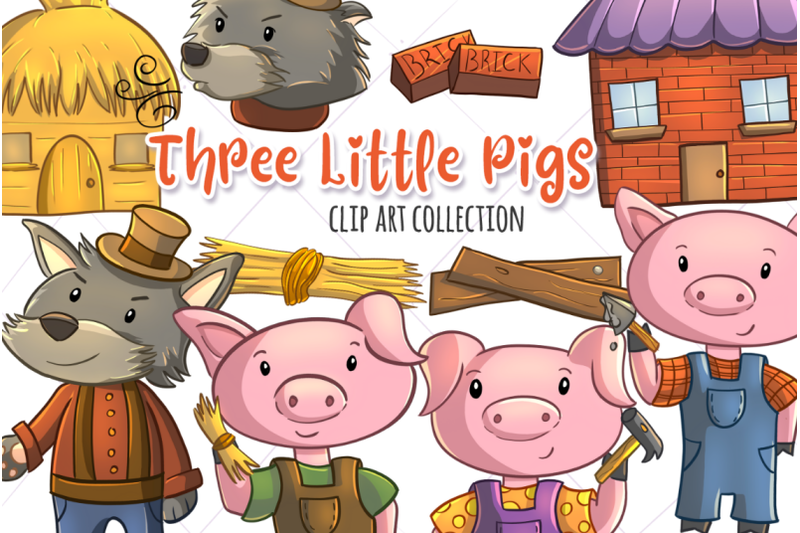
- Repetition: There is a repetition of the words “This little piggy” which has created a musical quality in the poem.
- Refrain: The lines that are repeated at some distance in the poems are called refrain. The phrase, “This little piggy” it has become a refrain as it has been repeated throughout the poem.
Quotes to be used
The lines stated below can be used while teaching phonics to the children. You can also use the entire poem to count fingers and toes.
“This little piggy went to market,
This little piggy stayed home,
This little piggy had roast beef,
This little piggy had none.”
report this ad
Roast beef ? Roast beef! - airrynna — LJ
Not so long ago, in a conversation on a culinary topic, the question was raised - can roast beef (from the English. Roast beef - literally "fried beef") be made from pork, that is, from pork? I must admit - I most often do it from pork. And I call it roast beef
And I call it roast beef
Churchill's roast beef
... The summer of 1956 turned out to be cold and cloudy. Sir Winston reluctantly reached out from under the covers, reached for the bell and rang. The valet was not long in coming. Churchill once again wondered when he sleeps?
- Good morning, sir.
The former Prime Minister of Great Britain mumbled something unintelligible in response, but over the years of service, Charlie got used to understanding everything without words.
- Breakfast is ready, Lady Clementine is in the greenhouse, the pigs are noisy and refuse to eat without you.
The latest news clearly pleased Sir Winston, his face lit up with a satisfied smile. After retiring and settling in Chartwell, Churchill began to breed pigs, which surprised many of his friends and colleagues. When asked about the reason for such a strange occupation, he answered: "I'm tired of dealing with people. At least they don't snap back."
- Would you like breakfast to be served, sir?
- No, - the Duke of Marlborough shook his head.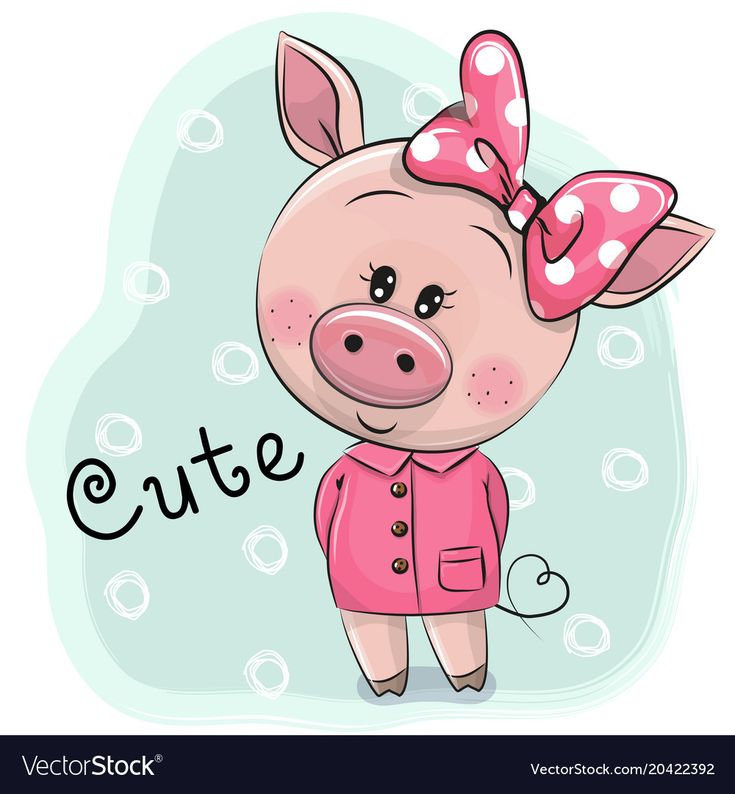 - I'll get up. - When the valet was at the door, raising his voice, he added: - Oatmeal is not necessary! I want an omelet!
- I'll get up. - When the valet was at the door, raising his voice, he added: - Oatmeal is not necessary! I want an omelet!
Charlie stopped, wanted to protest that Lady Clementine would be unhappy, but left without saying anything.
In the suburbs of Churchill they lived simply and the dining room was used only for guests, usually they ate in the kitchen. Sir Winston came out with the same cigar in the corner of his mouth. He smoked up to ten Romeo & Julietas a day, and everyone got used to it, even the servants, who were more worried than others about the carpets on which the ashes were shaken. Noticing the owner without a cigar, the servant looked at each other - did something happen? Churchill sat down on a stool, and faithful Charlie, coming up behind him, tied a napkin for him, more like a baby bib. Churchill grimaced in displeasure, but passed the test. This bib was invented by his wife to save his suits, which he inadvertently burned with cigars.
When the cheese omelette was on the table, and the coffee was removed from the stove and freed from the foam, as the owner liked, Charlie, deliberately coughing, asked:
- Anything else, sir? Continuing to chew, Sir Winston said:
- More.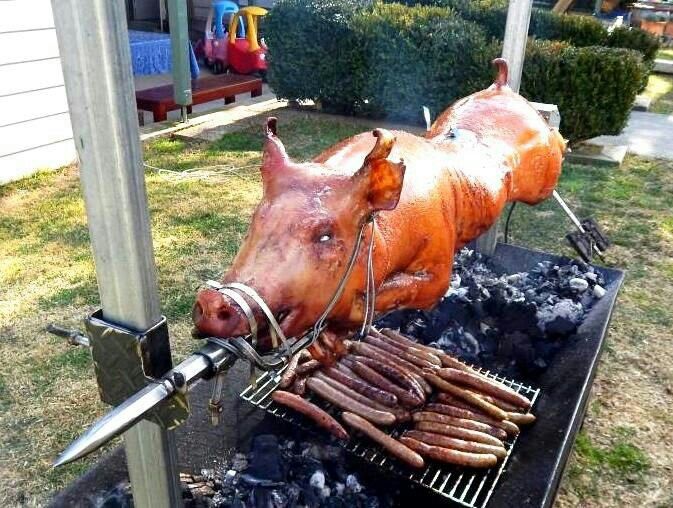
And the valet began to cook the second scrambled eggs. Of course, cooking was not part of his duties, but even during the war years it was customary that it was he who prepared breakfast.
"Sir, Lady Clementine asked me to tell you to arrange dinner," Charlie said as the owner began to drink coffee.
- Roast beef ... - Churchill said with taste, - pudding and salad.
- Will you cook the roast beef, sir?
The question seemed so irrelevant that Churchill did not answer it.
- I often want to ask you, sir... - Charlie said hesitantly, and Sir Winston looked up at him. Until a few years ago, such things were not allowed to servants, but Charlie served him so long and faithfully that some indulgences were allowed to him.
- Ask.
- Don't you feel sorry for them?
- Whom? Churchill raised his eyebrows in surprise.
- Pigs, sir.
Churchill chuckled and the valet blushed.
- Not a pity. These are people who are born for a feat, and who for . .. - here the former English prime minister uttered a word that was unacceptable in a good society, but in retirement he allowed himself such liberties. - Cows, in addition to meat, also give milk. Sheep - wool, poultry - eggs. Well, what is the pig for? For meat only! And why do you think I should feel sorry for her? Charlie was already regretting asking his question. Churchill sensed this and spoke himself.
.. - here the former English prime minister uttered a word that was unacceptable in a good society, but in retirement he allowed himself such liberties. - Cows, in addition to meat, also give milk. Sheep - wool, poultry - eggs. Well, what is the pig for? For meat only! And why do you think I should feel sorry for her? Charlie was already regretting asking his question. Churchill sensed this and spoke himself.
- Here you are with me, Charlie, you have been serving for thirty years.
- Thirty-two, sir.
- Well, thirty-two! - The Duke of Marlborough pursed his lips, noticed that the cigar had gone out, but did not light it again. - Tell me... - He pretended to think. The valet stretched out as far as his age and senile stoop would allow. "Tell me..." Churchill repeated, "you've been with me for so many years... have I ever annoyed you?"
Charlie is covered in spots.
- Never, sir.
- Don't lie, - the owner furrowed his eyebrows and grinned. - You all hate my cigars. Clementine says that if I didn't smoke them, I could make a fortune with just a darn. Why are you silent?
Clementine says that if I didn't smoke them, I could make a fortune with just a darn. Why are you silent?
- I'm listening, sir.
- Don't listen, but answer! Churchill pretended to be angry.
- It was at the very beginning... - Charlie began after a long pause, and Sir Winston frowned. - It took me a long time ... - it was clear how hard it was for the old servant to confess, - I got used to the idea that you smoke out my weekly salary in just one day. As he said this, Charlie stooped lower and lower, and when he finished, he seemed to have shrunk by a full foot.
Sir Winston sat silently for some time, then quietly at first, then louder and louder began to laugh:
- Well, I can't! I can not! Tell me! Churchill choked with laughter. Are you used to it now or not? Used or not used?
- I'm used to it, sir.
Attracted by the noise, Lady Clementine Churchill entered the kitchen. Sir Winston broke off and tried to get up. They had long celebrated their golden wedding, but his feelings for his wife remained as reverent as in his younger years.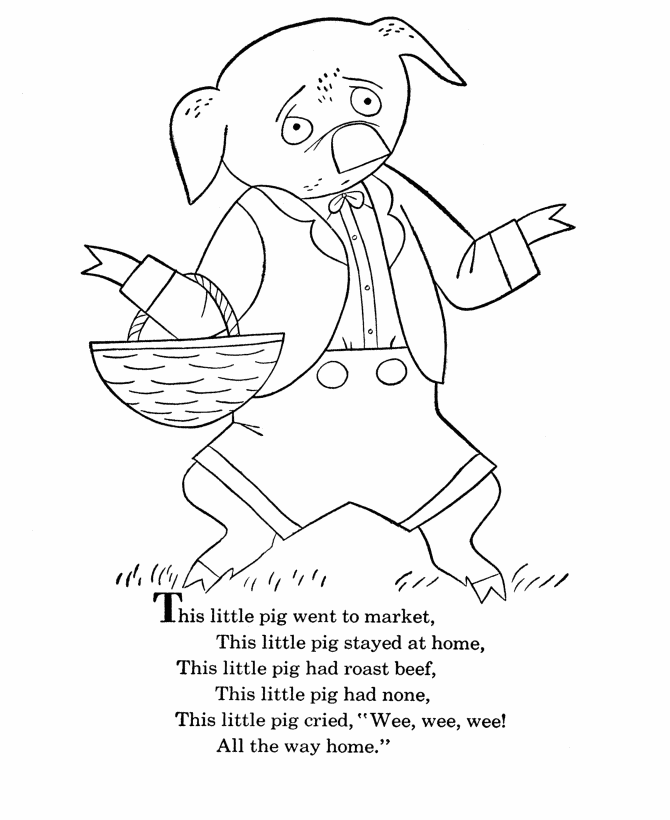
- Sit down, Uni! she stopped her husband and handed the vase to the valet.
If Churchill raised pigs, then Clementine raised roses. Her rose garden was considered one of the best in the county, but God only knew how much work it cost her.
- Get water, Charlie, and put some flowers, I left them on the table.
- Have you made arrangements for dinner, dear? - she turned to Winston, when the valet left, and sat down opposite.
- Roast beef, pudding and salad! Churchill reported, and Lady Clementine smiled.
- Then don't waste your time. Go feed your friends and get some meat. Today I invited Mary and I don't want you to keep her waiting. Churchill got up heavily and headed for the exit.
Lady Maria Evelina Astor, an old friend of Clementine's, lived nearby at Hever Castle, which once belonged to Anne Boleyn. Having grown old, the ladies met infrequently, and each visit of Astor meant something more for Churchill's wife than the traditional fife-o-clokty.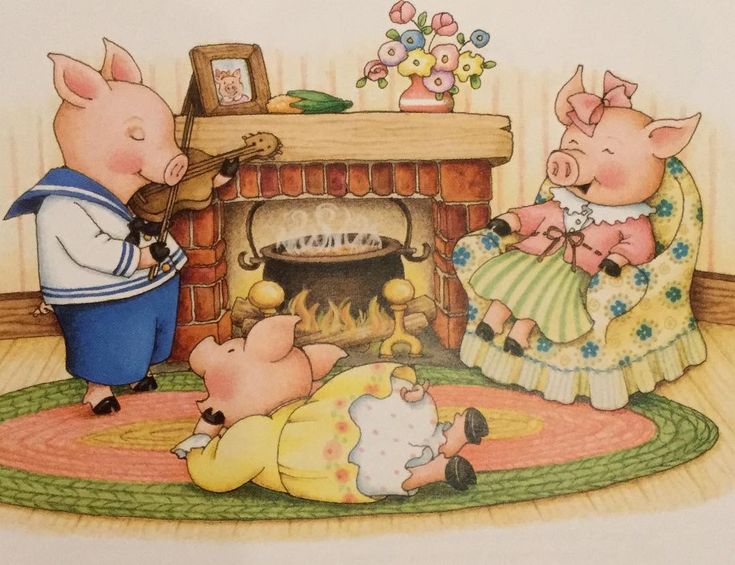 And once Lady Astor was against the union of a close friend with the odd, in her opinion, Duke of Marlborough. Overweight, casually dressed, not avoiding a strong word, Winston Leonard Spencer Churchill was considered a far from brilliant match for the refined and well-educated Clementine. In addition, Winston liked to eat well, which irritated the diet-obsessed Mary even more. Once, catching him eating a large and juicy piece of pork, Lady Astor twisted her mouth and so that everyone around could hear, she said: “If I had to marry you, Winston, I would definitely put poison in this piece of you!”. But Churchill did not lose his head and immediately retorted. "If I were your husband, Mary, I would take this poison!"
And once Lady Astor was against the union of a close friend with the odd, in her opinion, Duke of Marlborough. Overweight, casually dressed, not avoiding a strong word, Winston Leonard Spencer Churchill was considered a far from brilliant match for the refined and well-educated Clementine. In addition, Winston liked to eat well, which irritated the diet-obsessed Mary even more. Once, catching him eating a large and juicy piece of pork, Lady Astor twisted her mouth and so that everyone around could hear, she said: “If I had to marry you, Winston, I would definitely put poison in this piece of you!”. But Churchill did not lose his head and immediately retorted. "If I were your husband, Mary, I would take this poison!"
And of course, they didn't become friends right away. Only over the years did Lady Astor get used to the shortcomings of her friend's husband, and Winston became more restrained in his language. Now, as for Clementine, her every visit to Chartwell was somewhat like a good Victorian family holiday.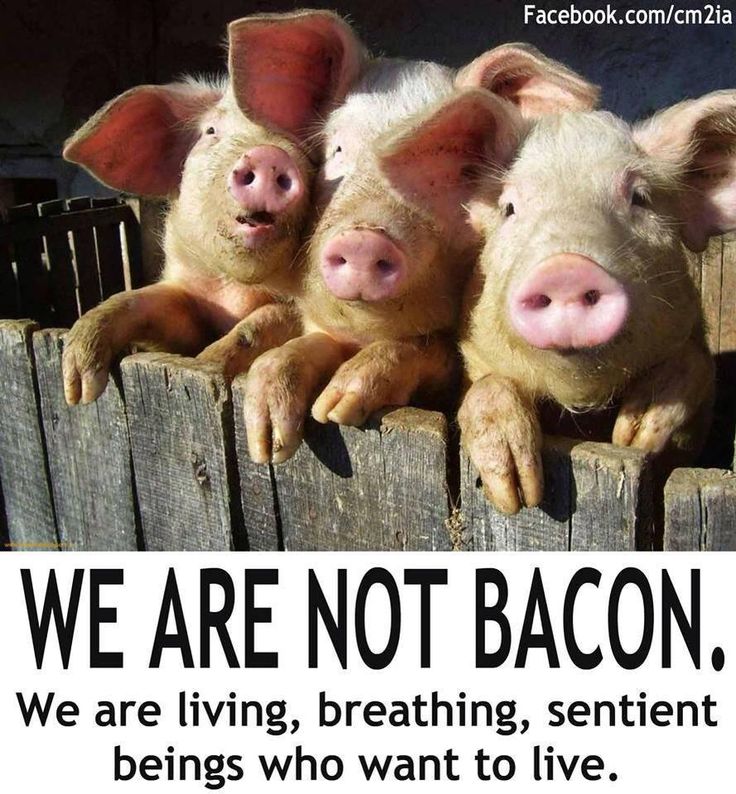
This time the pork turned out just right, the crust was exactly as thick as it should be, and covered the meat evenly, as if it was roasted not on a baking sheet, but on a grid. At the same time, the inside of the meat remained juicy and pink. Pouring the meat with the resulting juice, Churchill added a little rosemary. From this, a special, refined aroma spread throughout the dining room.
- It's not roast beef, Winston... - Lady Astor wrinkled her thin aristocratic nose.
- It's delicious, but it's something else. What have you added to the meat, my friend? Confess! I will make sure that this is not forgotten in my kitchen either.
Churchill, who did not part with his cigar even at dinner, chewed on its tip and, after a rather long pause, said: - Poison, Mary, poison ...
The elderly people laughed in unison and merrily.
Churchill roast beef
Products
* steam pork 1 kg
* butter 1 tbsp. l.
* pinch of rosemary
* salt to taste
Wash and dry the meat.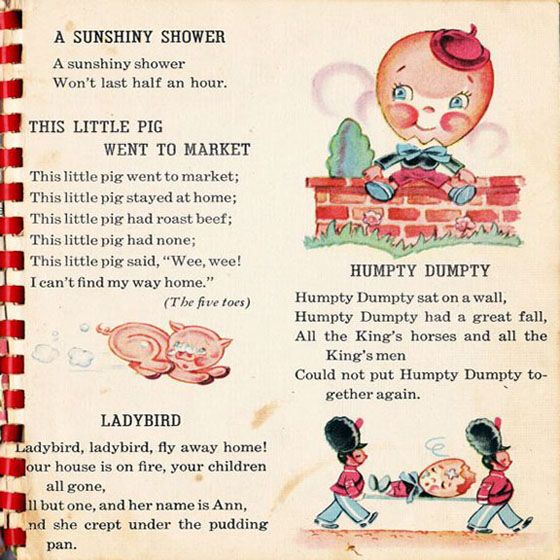 Heat the frying pan, melt the butter, put the meat, put it in a preheated oven (200 degrees) and cook for 5 minutes on each side so that the roast beef is covered with a golden crust. Then salt, sprinkle with rosemary and, often pouring over the secreted juice, continue to bake for another 15 minutes, but already on low heat. The finished meat should remain juicy and pink inside. Serve stewed fruit or unsweetened pudding as a side dish (you can replace it with regular unleavened flatbread).
Heat the frying pan, melt the butter, put the meat, put it in a preheated oven (200 degrees) and cook for 5 minutes on each side so that the roast beef is covered with a golden crust. Then salt, sprinkle with rosemary and, often pouring over the secreted juice, continue to bake for another 15 minutes, but already on low heat. The finished meat should remain juicy and pink inside. Serve stewed fruit or unsweetened pudding as a side dish (you can replace it with regular unleavened flatbread).
Vladimir Kreslavsky in the magazine "On Health! Simple, tasty, healthy!"
Via: http://www.edimdoma.ru/life03-15.shtml
By the way, did you know that according to a survey conducted in 2002 by the BBC, Sir Winston Leonard Spencer-Churchill (Eng. Sir Winston Leonard Spencer-Churchill) is considered the most prominent Briton in history?
The recipe for our beloved roast beef on a pillow was found in Elena Ekaterinicheva's blog, and for the last year we have been preparing just such a recipe at home.
Products
* beef (any part) 1 kg, I take pork, neck chop or ham instead of beef.
* tomatoes 4 pcs.
* kiwi 4 pcs.
* tangerines 4 pcs.
* salt and black pepper to taste
First of all, turn on the oven for heating at 250 degrees, because the direct participation of the hostess, as usual, will be shorter than these 10-12 minutes. Wash the meat, dry thoroughly with a towel. Rub the meat with salt and pepper. In a deep glass form, (necessarily with a lid) cut into layers: tomatoes without skin, kiwi fruit without skin. Peel tangerines, put in slices. On these three layers of the “cushion” - without a drop of oil (!), Without a drop of water (!) - lay a whole piece of meat. Close the mold with a lid. The time in the oven is calculated as follows: for 1 kg of meat - 40 minutes at 250 degrees, and let it languish for another 40 minutes at 150. Do not worry, please: nothing will burn. Tomatoes, kiwi and tangerines instantly release juices, in which the meat is subsequently baked, and by the end the “vitamin pillow” itself turns into a wonderful orange sauce with small pieces of tangerine (the tomato and kiwi dissolve almost completely).
In fact, homemade roast beef soaked through with vitamin C can be eaten tomorrow and the day after tomorrow. Sandwiches or thinly sliced cold appetizers are amazing.
The whole truth about pork - Afisha Daily
Everything you know is a lie
Petya Pavlovich
October 19, 2016 18:56
a number of myths and prejudices. "Afisha Daily" continues the series of columns of the "Youth" butcher Petya Pavlovich with another important deed - debunking these myths.
"Pork smells and tastes bad because pigs are dirty animals."
Pork is too fatty.
"Pork should never be eaten uncooked, let alone raw."
Let's try to figure it out.
The pig is special
The isolation of pork is clear: among all livestock, the pig is the only non-ruminant omnivore. On the one hand, this is good, because the pig is easier to feed, it is unpretentious in food; in addition, pigs are prolific and quickly gain weight.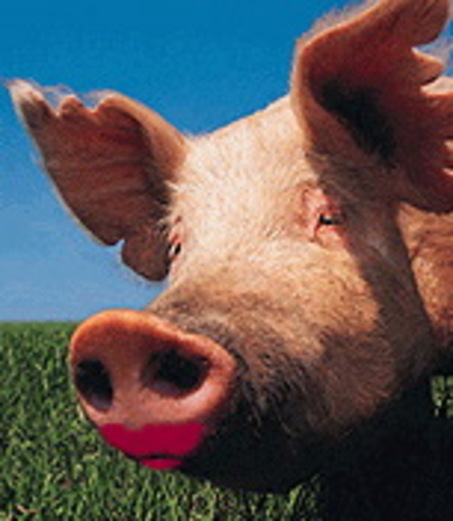 All this makes pork cheaper and more accessible than beef. In the days of the USSR, they ate more of it, but now no one wants to eat it: unlike, for example, beef, it is often considered unfashionable, difficult to digest and unpleasant in taste. Especially in cities where people have a wide choice of food. Despite the fact that pork is healthy, tasty and easy to cook.
All this makes pork cheaper and more accessible than beef. In the days of the USSR, they ate more of it, but now no one wants to eat it: unlike, for example, beef, it is often considered unfashionable, difficult to digest and unpleasant in taste. Especially in cities where people have a wide choice of food. Despite the fact that pork is healthy, tasty and easy to cook.
Oh, this omnivorousness
On the other hand, the food promiscuity of pigs can cause diseases dangerous to humans. In ancient times, there was such a problem with pigs: they ate everything and you don’t understand where. For this reason, an unpleasant worm, trichinella, was often found in pork. This was a big problem, because this worm is dangerous for a person who has eaten such meat. Most likely, religious prohibitions on the use of pork grew on this basis: thousands of years ago, people could not cope with such a scourge.
But progress, as we know, does not stand still. Modern conditions for keeping pigs on farms exclude contact with wildlife and pasture, and strict veterinary control before sale eliminates the risk of getting infected meat in a store or market.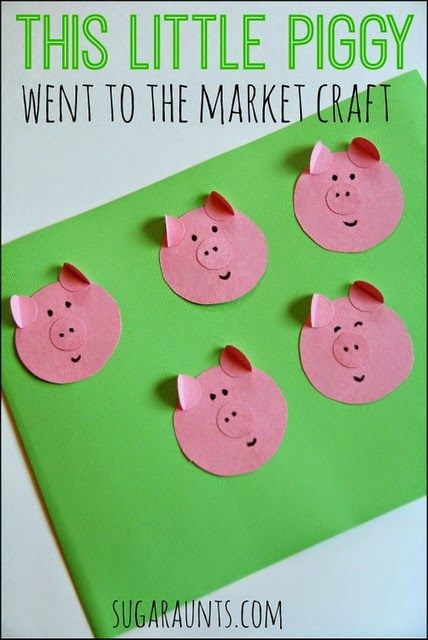 When raising pigs on free range, this pasture is still limited, both for pigs from the inside, and for rodents and other evil spirits from the outside. The risk still remains - if you buy pork in a spontaneous market, meat that was grown in some village somewhere by a walking pig that ate some kind of carrion. It is easy to eliminate such a risk: you need to buy meat from trusted suppliers, in stores, in markets where the meat undergoes veterinary checks.
When raising pigs on free range, this pasture is still limited, both for pigs from the inside, and for rodents and other evil spirits from the outside. The risk still remains - if you buy pork in a spontaneous market, meat that was grown in some village somewhere by a walking pig that ate some kind of carrion. It is easy to eliminate such a risk: you need to buy meat from trusted suppliers, in stores, in markets where the meat undergoes veterinary checks.
The peculiar aroma of pork is also interpreted by many as the result of pigs' unscrupulous diet. Firstly, as I mentioned above, the diet of pigs on farms is carefully controlled, and they do not eat everything in a row. Secondly, the process of absorption of nutrients is quite complex, and meat (actually, fat) does not take on the taste of everything that the animal eats. Only some substances are deposited unchanged in adipose tissue and further affect the taste and other organoleptic properties of meat. For example, the basis of the diet of black Iberian pigs in the last months before they become jamon is acorns, rich in unsaturated fatty acids and antioxidants.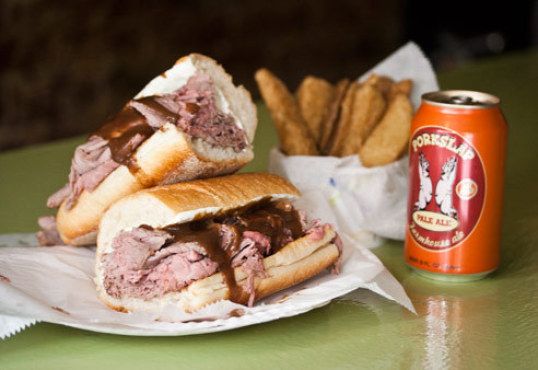 This is an important reason why the fat of such a pig is very fragrant, soft and develops flavor during a long curing process. In general, the characteristic taste of pork is rather genetically determined, and it is for this taste that we appreciate it.
This is an important reason why the fat of such a pig is very fragrant, soft and develops flavor during a long curing process. In general, the characteristic taste of pork is rather genetically determined, and it is for this taste that we appreciate it.
Fat is good
Yes, pork is often fatter than beef, and pork fat melts more easily, which adds a fat feel to the meal. There are many breeds of domestic pigs, only in Russia about two dozen are bred. There are bacon (meat), tallow and mixed breeds that differ in the ratio of meat and lard. The meat of bacon pigs is not very fatty. Other than that, fat is not a problem at all, because the newest healthy eating paradigm declares moderate consumption of animal fats to be good, and fat is the cause of juiciness and the conductor of flavors in meat. Especially fusible, enveloping pork fat.
So what about underdone pork?
Traditionally, pork is fried until the juices are completely squeezed out, when the temperature of the meat inside approaches the boiling point of water. This is, how to put it, too much. Most pathogenic bacteria and organisms for humans die at lower temperatures, but excessive overheating of meat makes it much less tasty and nutritious. It is also useful to know that the death of these bacteria and organisms depends on a combination of temperature and the time they spend at that temperature. The same trichinella dies at a temperature of 52 degrees within 47 minutes, and at a temperature of 55 degrees - within 6 minutes. The official recommendation with a margin is to cook pork to a temperature of 63 degrees inside and leave it at that temperature for 3 minutes before eating. In amateur kitchen reality, the range is 59-62 degrees is optimal in terms of softness and juiciness of meat and at the same time safety, you just need to remember to check that in the thickest part of the piece the temperature reaches a value from this range and stays in this state for several minutes.
This is, how to put it, too much. Most pathogenic bacteria and organisms for humans die at lower temperatures, but excessive overheating of meat makes it much less tasty and nutritious. It is also useful to know that the death of these bacteria and organisms depends on a combination of temperature and the time they spend at that temperature. The same trichinella dies at a temperature of 52 degrees within 47 minutes, and at a temperature of 55 degrees - within 6 minutes. The official recommendation with a margin is to cook pork to a temperature of 63 degrees inside and leave it at that temperature for 3 minutes before eating. In amateur kitchen reality, the range is 59-62 degrees is optimal in terms of softness and juiciness of meat and at the same time safety, you just need to remember to check that in the thickest part of the piece the temperature reaches a value from this range and stays in this state for several minutes.
In a professional kitchen, using sous vide technology (read "sous vide"), you can cook pork even more raw, because it becomes possible to pasteurize meat for a long time at a constant low temperature (for example, 52 degrees). And even more raw pork means new culinary possibilities: pork tartare, carpaccio, perfect pork steak and more and more. In general, the flip side of the pig's omnivorousness is that it has become a universal object for a cook of any nationality and any qualification. It suits the widest range of flavors, textures and technologies. From jamon to fake tuna, from pate to steak.
And even more raw pork means new culinary possibilities: pork tartare, carpaccio, perfect pork steak and more and more. In general, the flip side of the pig's omnivorousness is that it has become a universal object for a cook of any nationality and any qualification. It suits the widest range of flavors, textures and technologies. From jamon to fake tuna, from pate to steak.
"One and a half billion Chinese people can't be wrong"
Despite the fact that most people on the planet eat goat meat (surprisingly, but true), pork holds the world championship in the amount of meat eaten. Most of the pork per capita is eaten in China and it is also produced there most of all. Pork remains the most popular red meat in Hungary, Spain, Montenegro, Belarus and other European countries. The reason is the same: pork is easy to breed, grow, cheap to produce and very tasty and nutritious, in general, not meat, but a dream.
Peace, love, pork chop.
In the summer of 2014, on the instructions of the chef and co-owner of the Delicatessen and Yunost restaurants, Ivan Shishkin, Petya Pavlovich went to study at the Fleishers American butcher school in New York.











